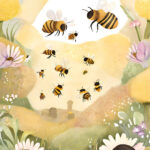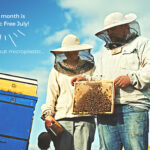
Beeswax is a very professional building material that honey bees impressively produce by themselves to create the honeycomb, which in nature has a hexagonal shape of cells.
A hexagonal shape of the comb’s cells are ideal regarding spent material ensuring its maximum stability and toughness. One gram of wax will serve for the construction of 20 cm of honeycomb!
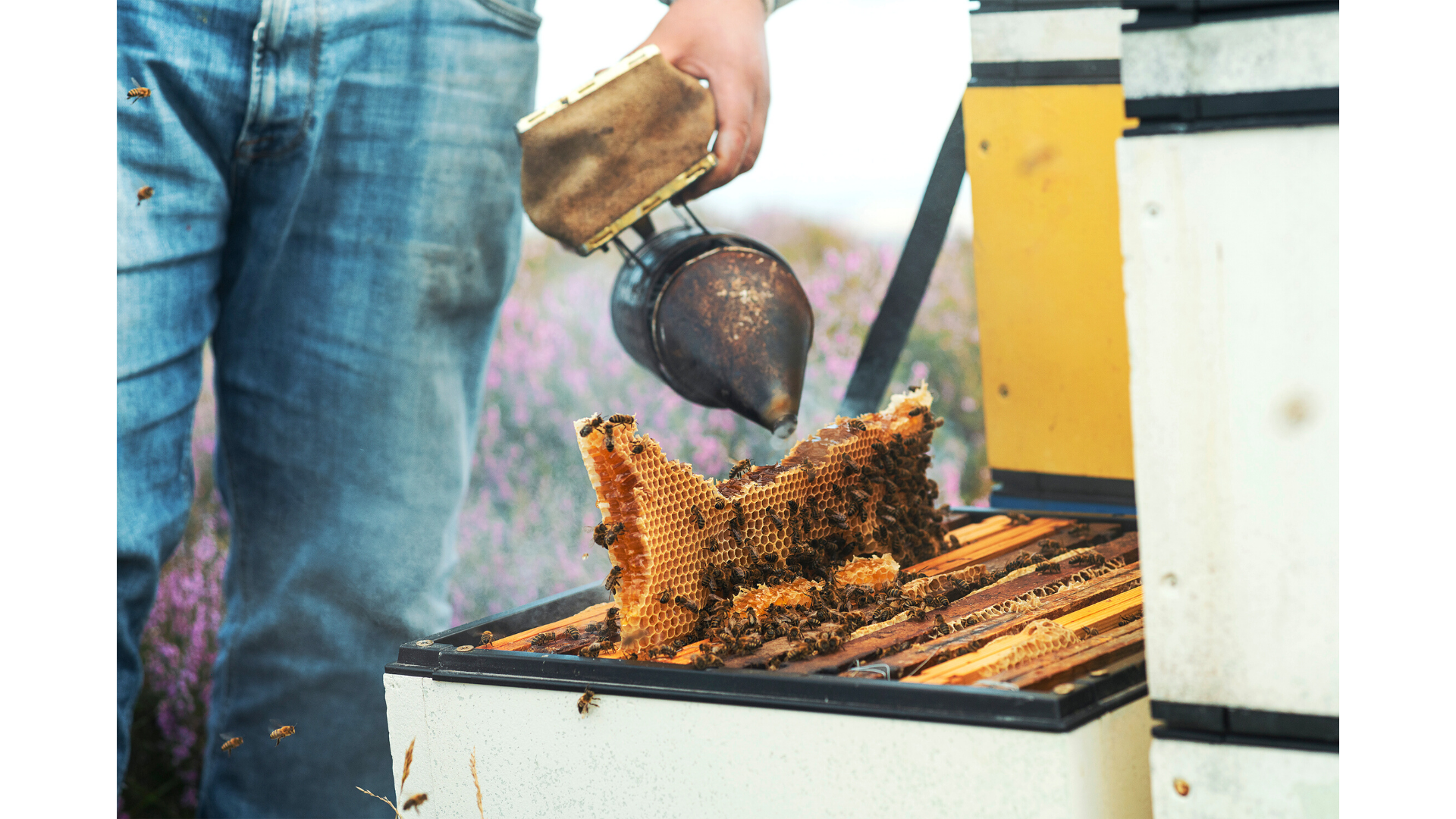
To produce beeswax, honey bees need to consume some honey which later on is metabolized in fat cells in their eight wax producing glands on the underside of their abdomen where they secrete beeswax.
The beeswax hardens there and flakes off in flat white pieces called scales. The scales are then chewed and softened by worker bees and formed into hexagonal cells within the comb.

Queens and Drones do not have abdominal wax glands and are unable to produce wax at all – It is the young worker bees who are responsible for wax production and in order to do so, they must eat bee pollen in their first days of life. The protein in bee pollen is necessary when secreting the wax for adequate fat cell development.
Most of the wax production is taken at its active growth phase and is secreted primarily during very warm months of the bee season.
The presence of wax inside the hive is crucial as it has many functions – and we would say each of the functions has much importance:
- BROOD REARING – egg laying of bee workers and drones by Queen Bee
Combs are the only built in colonies that have a queen. During the summer a good queen may lay 1500-2000 eggs per day, which results in 1500-2000 bees hatching after the three-week development period. Each of the eggs are laid in one hexagonal cell.
Apis mellifera Worker Bee cells are 5 to 6 millimetres in diameter and are about 0.25 mm in thickness. Drone cells have a diameter varying between 6.2 and 6.9 cells. It is said that egg development is faster if the cells are smaller, however as said above – drones require larger cells.
Queen bees are not raised in the hexagonal brood comb, but require a special queen cell.


Just look at this beauty!

2. HONEY, BEE BREAD AND POLLEN STORAGE
It is clear that in periods when nectar flow happens there is high demand to store the crops, therefore it results in the need of more wax production. Nectar flow also stimulates the wax producing glands of worker bees.
Wax is used by honey bees to protect themselves against water loss through the integument and in the construction of combs. Each one of the hexagonal cells is protected and closed by cappings which are made almost of pure beeswax – they are considered as one of expensive form of pure beeswax.
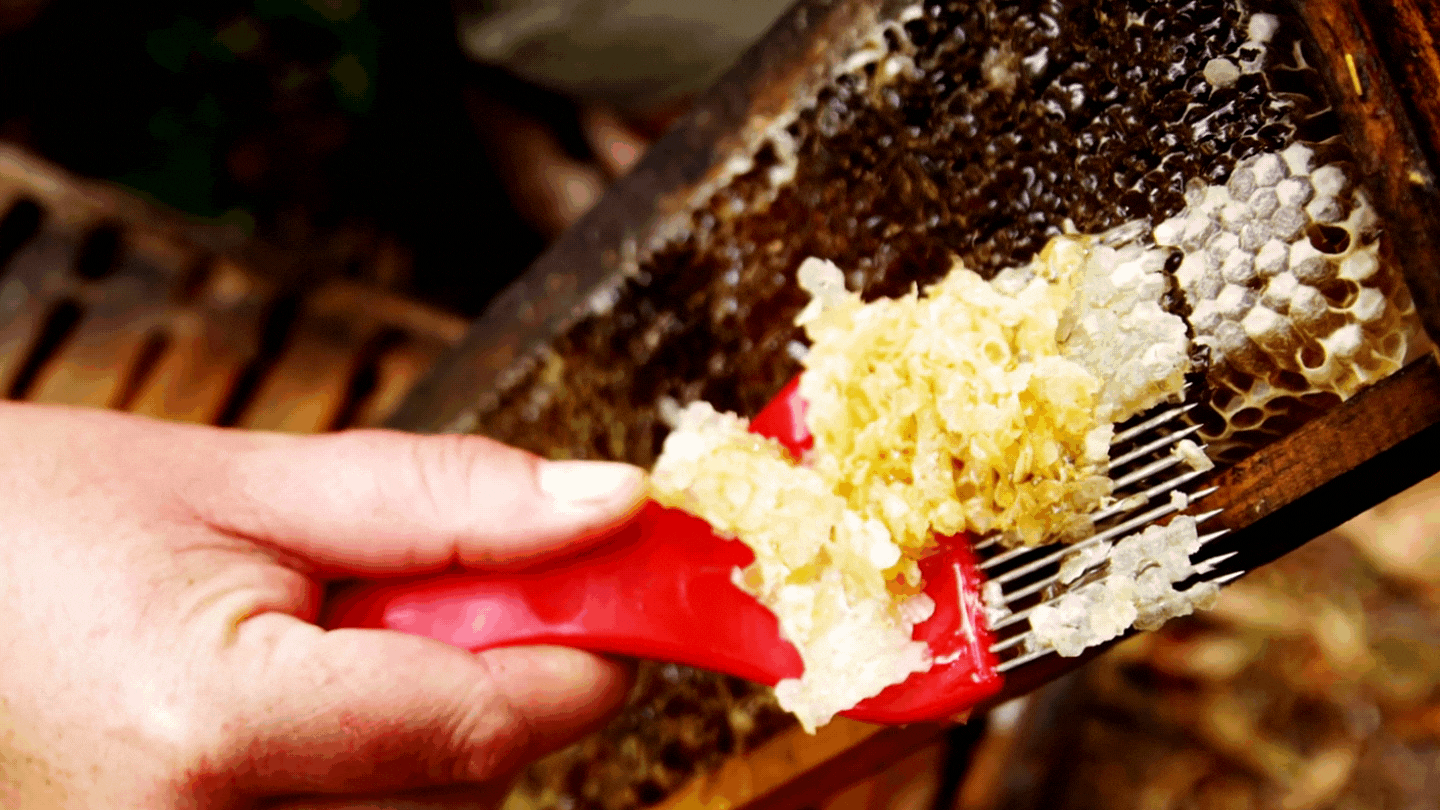
3. COMMUNICATION INSIDE THE HIVE
With so much going on between so many bees in a hive, bees need an effective method of communication. Their top choice? Dancing!
Bees actually have two main forms of communication. They rely on smells and pheromones for social clues and guidance, and they use dance to communicate messages to their fellow workers. These dances were first observed by Aristotle, and they are common among all species of bees!
If a worker bee has found a nice nectar source and wants to share its location with the hive, she will return home and dance her feelings out, right on the honeycomb, in what scientists call “The Waggle Dance.” The Waggle Dance is a figure of eight pattern. The worker bee first walks in a straight line across the comb buzzing and shaking her abdomen, and then loops back around to the start of this line to repeat her waggle. It’s important to note that bees don’t usually watch these dances. It’s too dark and crowded inside a beehive for that. Bees are very sensitive to vibration and they will feel their co-worker’s dance through the honeycomb.
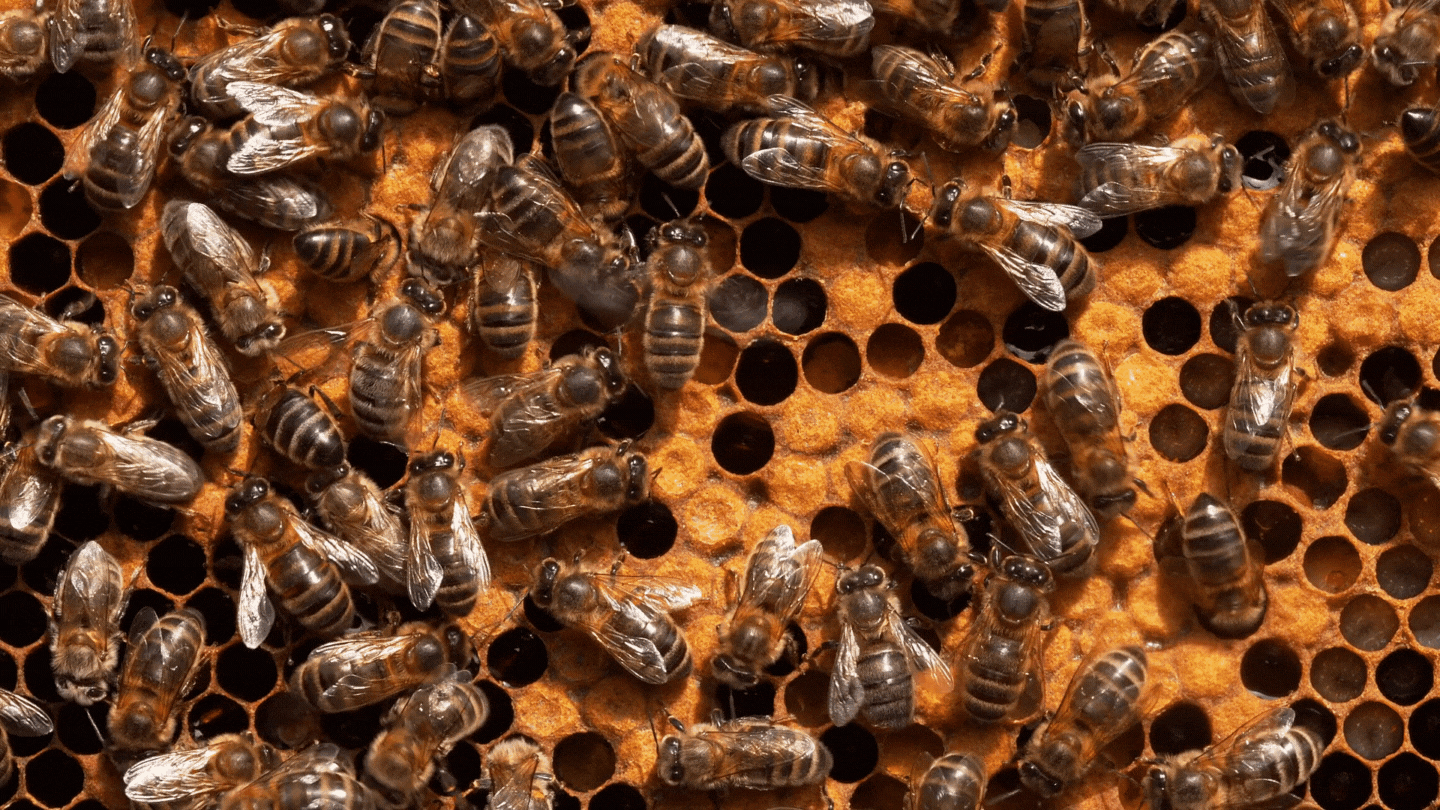
In comparison to other waxes, beeswax is lipid-like and its main compounds are: alkanes, alkenes, free fatty acids, monoesters, diesters and hydroxymonoesters. Fatty alcohols and hydroxydiesters are minor constituents.
IS WAX EDIBLE?
Comb honey is honey intended for consumption which is still contained within its original hexagonal-shaped beeswax cells, called honeycomb. It is eaten as produced by honey bees and has received no processing, filtering, or manipulation.
Before the invention of the honey extractor, almost all honey produced was in the form of comb honey. Today, most honey is produced for extraction but comb honey remains popular among consumers both for eating ‘as is’ and for combining with extracted honey to make chunk honey. Hobbyists and sideliners can develop their beekeeping skills by producing comb honey, which takes more rigorous attention to beekeeping than the production of extracted honey. Comb honey production is more suitable for areas with an intense prolonged honey flow from eucalyptus, alfalfa, alsike, and yellow clover. Wooded areas are not as suitable for comb honey production, as bees tend to collect more propolis, making the harvesting of comb honey more difficult. This problem has been largely circumvented with the adoption of specialized frames, such as the Ross Round frame, which prevents accumulation of propolis on saleable units.
Not only is Honeycomb a tasty treat, it also provides unique health benefits. Honey from the comb is the purest and most nutritious form of honey there is. Its hexagonal structure traps a range of extra vitamins, minerals, and antioxidants only found in honeycomb. Heaps of calcium, iron, magnesium, vitamin C, B6, A, E, and D.
Honeycomb actively boosts your immune system thanks to flower nectar containing phytochemical and plant polyphenols. It even contains traces of the queen’s royal jelly, a natural superfood! These antioxidants also promote heart health and better sleep!
Chewing Honeycomb boosts your oral health, as well as helping your immune system fight allergies.
WAX HARVESTING
Worldwide beeswax production is mainly specialised by beeswax manufacturers and it’s up to beekeepers to provide them with either crude wax or the old combs.
Each time honey is harvested – honeycombs – beeswax comes with it. Wax produced by the comb cappings is considered as the best quality wax.
It is a good beekeeping practise to remove old combs out of the hive as they might become a source of infections – if removed all old combs and pieces of wax should be maintained into wax blocks.
Wax is mainly used in candle making, as shoe/funiture polish but also in food preperation such as Cheese coating.
It is very popular nowadays to use beeswax in homemade wax wraps production – have you tried already?


